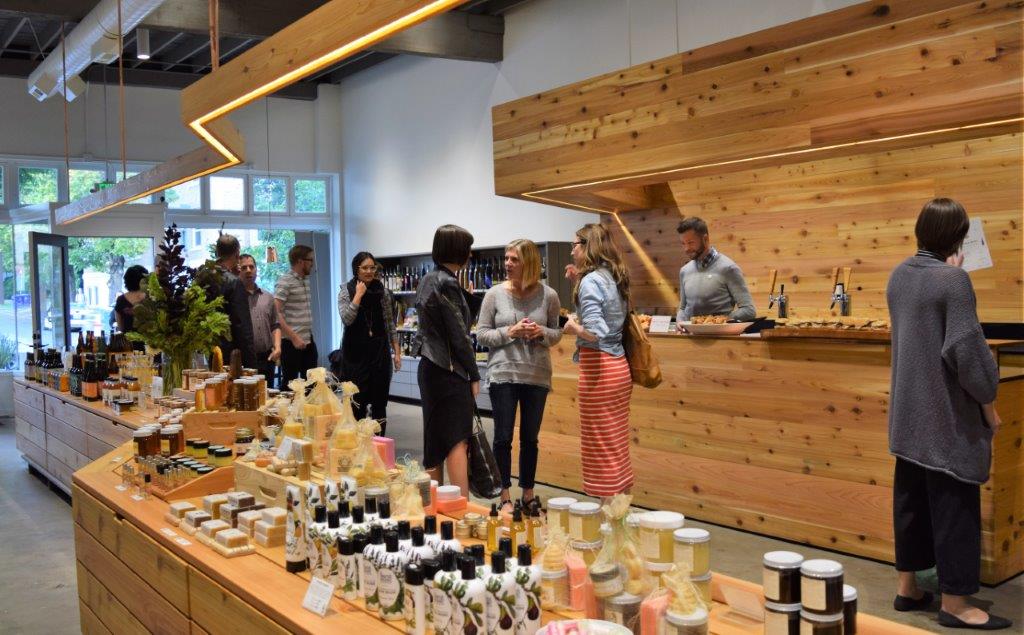Mead, or honey wine, is made by fermenting honey, water, and yeast, and it may very well be the world’s first wine and first alcoholic beverage. Chemical traces of a fermented beverage made from rice, honey and hawthorn fruit and/or grape have been found in pottery dating from 7000-6600 BCE in Northern China. This would predate the first barley beer and grape wine believed to have been made in the Middle East by about 500 years. That’s not a lot of time in the big picture, but an interesting distinction nonetheless.
We’re currently seeing a surge of interest and creativity in this surprisingly versatile ancient drink. The popularity of homemade beer and hard cider (another fermented beverage with a notable lineage) and with backyard beekeeping have created an increase in mead production. The American Mead Association says there are between 350-400 meaderies in the U.S., up from just 50-75 only 5 years ago. And meads are quite popular in much of Eastern and Northern Europe.
The variety of meads and the quality of some of these wines may come as a surprise. If you’ve experienced mead only as a sticky-sweet dessert drink, let go of that notion. If you haven’t tried mead, this is the time. These new meads are often crafted with the same attention given to boutique wines and craft beers and ciders.
Portland’s Mead Market
Mead Market is Portland’s new mead tasting room and bottle shop. Mead Market owners, Matt Reed and Jill McKenna, have operated Bee Thinking, their Portland-based company that makes and sells a line of beehives since 2008. They ship their beehives and other apiary accouterments world-wide. Locally, they host classes on beekeeping for interested hobbyists and businesses.

Mead Market owners, Matt Reed and Jill McKenna
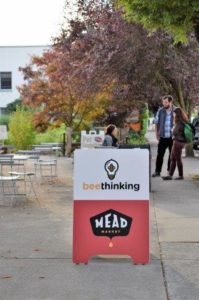 The couple watched the popularity of beekeeping thrive, and see their work as a stewardship to contribute to the health of bees. We’ve been hearing for some time about diminishing populations of bees and the important role they place in eco-systems. The U.S. government just recently added seven species of Hawaiian bees to the Endangered Species list. World-wide, scientists are looking into the problem.
The couple watched the popularity of beekeeping thrive, and see their work as a stewardship to contribute to the health of bees. We’ve been hearing for some time about diminishing populations of bees and the important role they place in eco-systems. The U.S. government just recently added seven species of Hawaiian bees to the Endangered Species list. World-wide, scientists are looking into the problem.
With the growing number of meaderies in the Northwest—and successful wine, beer and cider industries—Reed and McKenna thought the time was right to open the West Coast’s first mead tasting room and bottle shop.
They expanded Bee Thinking’s 3,000 square foot space by an additional 800 square feet, and worked with Fieldwork Design on extensive renovations. The result is bright and inviting, with high-ceilings and plenty of honey-colored and gray-washed woods, and light fixtures and wall adornments reminiscent of beehives.

Mead Market

On display are also some of BeeThinking’s beehives and other aviary supplies.
The shop offers more than 80 varieties of both domestic and international meads, including meads from more than 15 categories, or styles, with four draft taps. The meads are produced by small, artisan companies as well as larger companies.
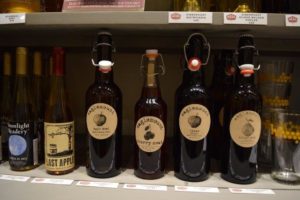
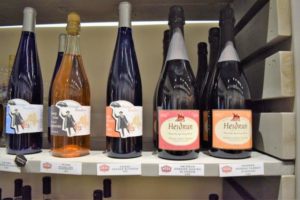
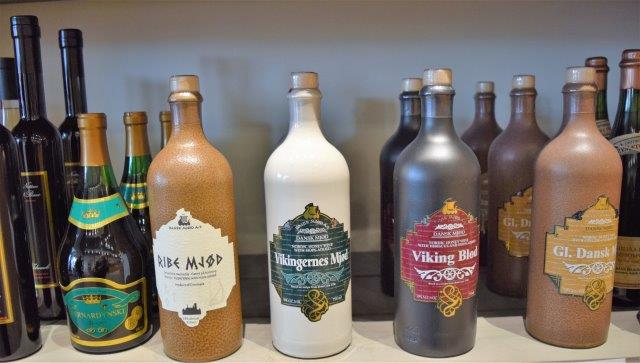
The shop carries both domestic and international meads.
Take home bottled honey or honey on tap, and honey-based products, like soaps, lotions, and other beauty products, or gift items such as candles and glassware.
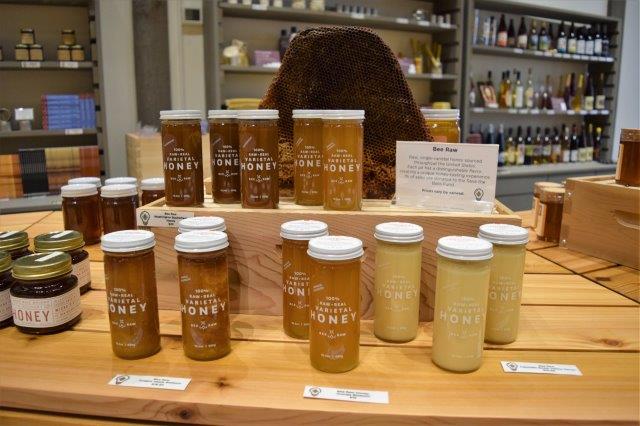
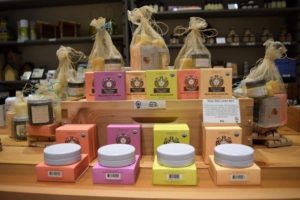
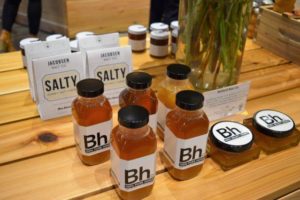
Sampling Meads

Mead Market Manager Cameron expertly led us through tastings.
The team at Mead Market has a gem in the man behind the counter; Mead Market Manager, Cameron Larson. Unlike the (grape) wine industry, there is no official certification program of all-things-mead, but my guess is Cameron could pass any test given.
At the opening event I attended, popular Portland restaurant, and next-door neighbor, Castagna, sent Bartender Halley over to mix cocktails. She poured a punch with Fringe’s Blackberry Basil mead and Aviation gin, and an truly wonderful Old-fashioned upgrade made with Ransom Wine & Spirit’s Whippersnapper whisky and Dansk Mjød’s Ribe. The take-away: Mead makes a wonderful cocktail mixer.

An Old-fashioned gets new flavors from the inclusion of mead.
Here’s what we sampled:
- Fringe’s Orange Cardamom mead; slightly effervescent, bone dry, with a light clover aroma;
- Eaglemount’s Apple mead; off-dry, lower alcohol, great finish, a slight spiciness, perfect with savory foods;
- Hierophant’s Hopped Mead; hopped mead that would hold up well with a wide variety of hearty foods, great florals;
- Viking Braggot’s Reverence Red Ale; high aromatics, very beer-like in flavor, but the honey adds a richness that gives this great body;
- Moonlight Meadery’s Last Apple; low acidity, beautiful with a washed rind cheese or many desserts;
- Sap House’s Vanilla Bean; low acidity, sparkling mead with fresh vanilla aromas; sweet, but low in sugar.
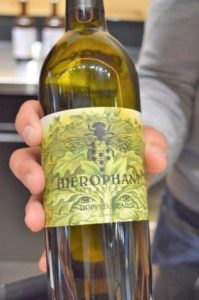
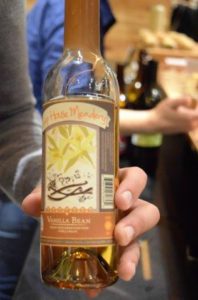

Picking up some for home as well.
Wide Variety of Mead Styles
The world of mead really is quite broad, just like wine, spirits, beers and ciders.
These are just some of the varieties found around the world, most of which are available in the U.S. A braggot is a mead that has also been brewed with malted grains and sometimes hops—a wine and beer combo, if you will. A cyser has added apple juice or cider, a pyment has added grape juice or grape wine, and a melomel has any other type of added fruit juice. A capsicumel is flavored with (hot or mild) chili peppers. Sparkling meads are very dry, and made méthode champenoise. (I brought home an especially tasty sparkling mead from California-based, Heidrum.) There are also sacks, sessions, rhodomels, metheglins, tej, acerglyn—and others.
Bottom line: there’s a lot to explore in the world of meads. The flavors, varieties, and nuances will be familiar to those who enjoy wine, beer and cider. Like these other beverages, they go well with food, or just for sipping, and meads are great in cocktails.
Skål!
For More:
- Mead Market, Portland, Oregon: meadmarket.com
- Bee Thinking, Portland, Oregon: beethinking.com
- American Mead Maker’s Association, mead-makers.org
- Fringe, Portland, Oregon, fringemead.com
- Eaglemount, Port Townsend, Washington, eaglemountwinery.com
- Hierophant, Mead, Washington, hierophantmeadery.com
- Viking Braggot, Eugene, Oregon, drinkviking.com
- Moonlight Meadery, Londonderry, New Hampshire, moonlightmeadery.com
- Sap House, Center Ossipee, New Hampshire, saphousemeadery.com
- Dansk Mjød, mjod.dk/#
- Ransom Wine & Spirits, ransomspirits.com
- Castagna, castagnarestaurant.com
-All photos by Nancy Zaffaro.

